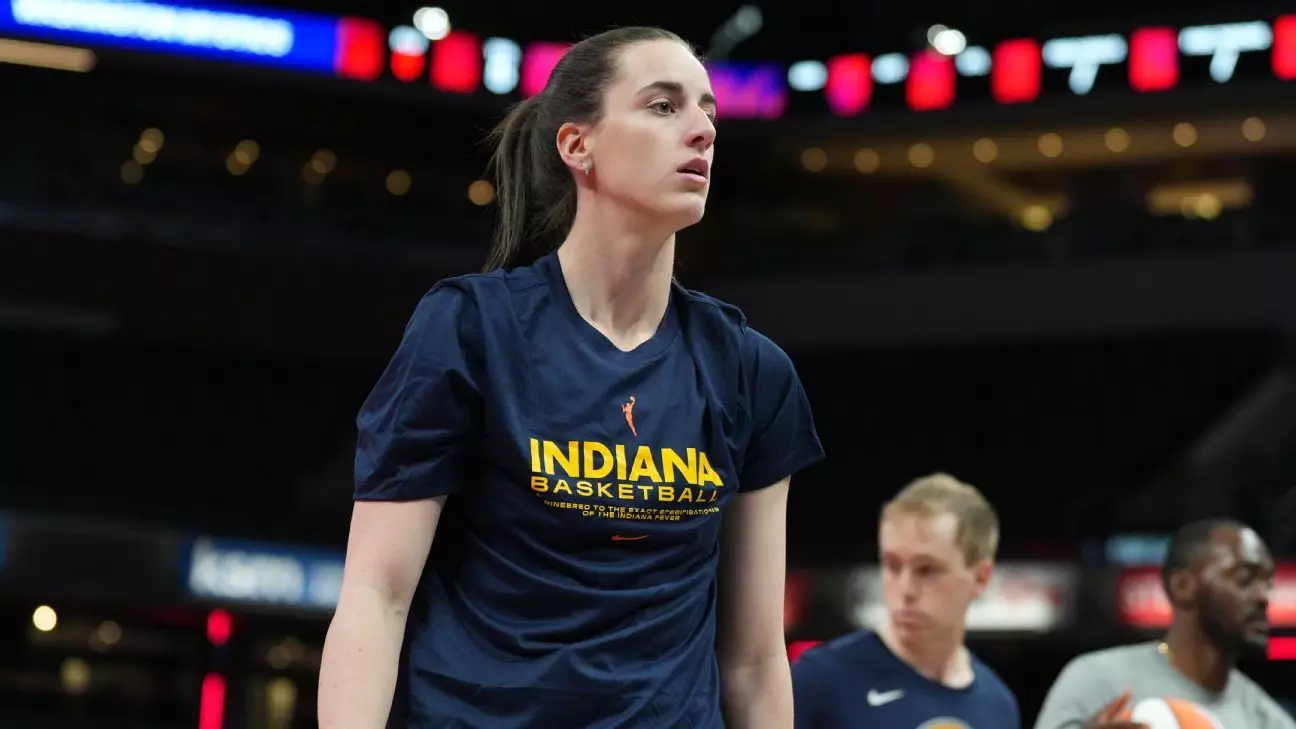Caitlin Clark, the phenomenal talent of the Indiana Fever and a recent No. 1 overall pick, is wrestling with a new adversary: a left quad strain that has sidelined her for three critical games. Her absence is a stark reminder of the vulnerability athletes face in their line of work. While the prospect of a comeback looms, with Clark hinting at a potential return as early as next Tuesday, she asserts a rather mature and measured approach to her rehabilitation. “I’m not going to rush coming back,” she maintains, emphasizing that the journey of healing takes precedence over the allure of competitive play.
It’s refreshing to witness such insight from a young athlete typically caught in the whirlwind of expectations. In an era where the pressure to perform and deliver results often overshadows health considerations, Clark’s thoughtful pragmatism should serve as a benchmark for athletes across all sports. It is profound to recognize that durability extends beyond physical tenacity; mental resilience plays an equally pivotal role.
The Burden of Absence
In competitive environments, the weight of absence affects not only the injured players but also their teams. Clark’s perspective on her inactivity is layered; while she experiences frustration, she also appreciates the unique opportunity for introspection. As the Fever struggled without their star player, going 1-2 in her absence, the emotional toll of missing games weighs heavily. Being sidelined from practice and team interactions fundamentally alters her experience on the court. She reflects, “Not being able to practice has often been the hardest part of being injured.” For someone who thrives on growth and development, forced pause feels like an affront to her identity as a player.
This time off serves as an unintentional classroom for Clark. As she observes her teammates through the lens of a sidelined athlete, she finds herself absorbing tactics and strategies that may have eluded her during active play. As she said, “It’s taught me a lot.” This not only strengthens her basketball IQ but also enriches her ability to connect with the game in a way she hadn’t previously considered.
Leadership from the Sidelines
Clark’s role as a leader evolves dramatically while she stands on the periphery. Restrained from direct involvement, she takes on the responsibility of being an emotive and vocal figure for her teammates. Instead of sulking over her injury, Clark embraces her role as a “connector” between players and the coaching staff, asserting an influence that often goes unnoticed: emotional leadership. This realization is refreshing, especially when the contemporary sports landscape often glorifies physical performance over other crucial aspects of teamwork—like communication and cohesion.
Coach Stephanie White’s encouragement to use this time for growth encapsulates a progressive mindset. It reflects an understanding that injuries, rather than solely hindering players, can also cultivate a different form of advancement. Athletes tend to feel shackled by the fear of losing their edge during recovery. In Clark’s case, this breaks the mold, allowing her to hone her skills in an unorthodox setting.
Team Resilience Amidst Challenges
The Fever faced significant trials during Clark’s absence, manifesting in their humble record of 3-5 amid injury hurdles, including those faced by fellow player Sophie Cunningham. Yet, Clark praises her team’s resilience, applauding their adaptability in adjusting to new dynamics. “I think just giving themselves grace. Things aren’t going to be perfect,” she comments, indicating an understanding that imperfection is inherent in sports—even more so when pivotal players are absent.
This acknowledgment is critical, especially in a sport where expectations can warp perceptions of success. Clark’s candid assessment not only embodies her personal growth but also hints at a broader lesson that teams should internalize: excellence is not merely about wins and losses, but about how players respond to adversity. The Fever’s recent win against the Washington Mystics serves as a glimmer of hope, a synthesis of adaptation and spirit that speaks to the possibilities of recovery and renewed ambition.
Growth in Adversity
As Clark navigates her injury, she illustrates a refreshing view of setbacks as stepping stones to growth. Recognizing that each day may bring new challenges heightens her awareness of mental fortitude, an aspect of professional sports that’s often overshadowed by physical prowess. Athletes are human, indeed, and the physical demands of their careers are only one part of their multifaceted lives.
Clark’s commitment to rehabilitation and understanding embodies a shift towards a healthier sports culture—one that values health and mental well-being just as much as athletic performance. As she prepares for her return, one can only speculate on how her time away will affect both her game and the very fabric of the Fever’s identity. With patience becoming a newfound virtue, Clark may emerge not just as a returner, but as an even more significant player—one who understands that the heart of the game lies not just in scoring but in connection, leadership, and continuity amidst the chaos.

Leave a Reply